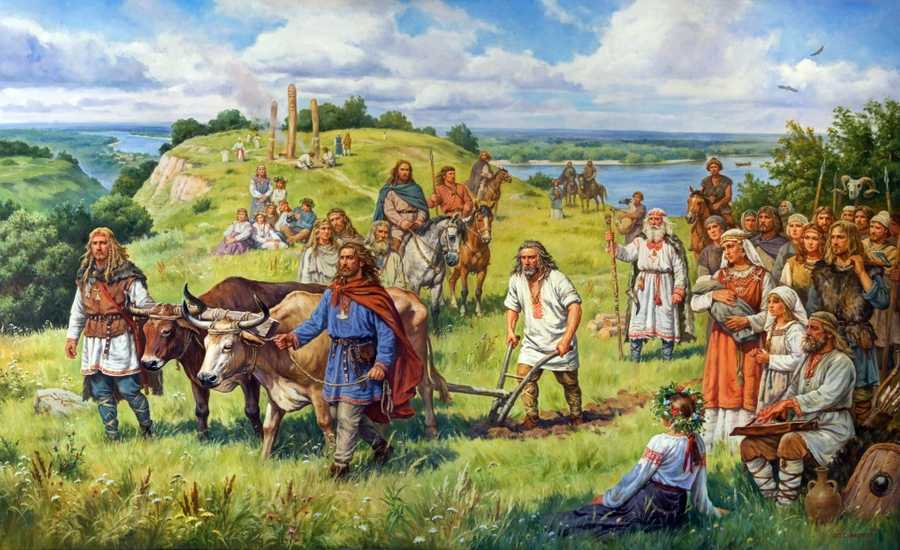Russia Before the Russians
How did the Russains get to Russia?
- The first known people to set foot on Russian territory were called the Cimmerians. They ruled between 1000 and 700 BCE and were followed by the Scythians in 700 BCE.
- The Scythian nomads established a military state and defeated the Persians, but were nonetheless conquered by the Sarmatians in 3 BCE.
- During the Sarmatian reign, Greek settlers colonized the coast of the Black Sea.
- Sarmatians and Greeks maintained friendly trade based relations until the German Goths interfered in 200 A.D.
- The Goths in turn were defeated by the Huns in 370 A.D., which paved the way for Bulgaric and Slavic settlement during the time of the European Migration Period.
- In the 7th century, a new force came to power in Southern Russia: the Khazars. They gave up the nomadic lifestyle, built towns and established trading connections. Everyone living in the Khazar state was allowed to practice whatever religion they believed in without restrictions.
- Finally, the Eastern Slavs appeared — the founders of the modern Russian state. By 900, their economy, society and culture where thriving. Yet it wasn’t until the 16th century that the Eastern Slavs crossed the Urals and began settling in Siberia.
If you have a look at the map, you will notice that Russia is situated both in Europe and in Asia. This country has always represented the bridge between the West and the East, and not only geographically, but also economically, politically, culturally and spiritually. It could be said that its historical mission has always been to connect two great civilizations, that of the East and of the West. This was also the case centuries ago, when there were no actual Russians on the territory now occupied by the Russian state.
At present we know, vaguely, the historical development of southern Russia before the appearance of the Russians and the Kievian state. It is important to appreciate this background in order to understand Russian history.
Cimmerians
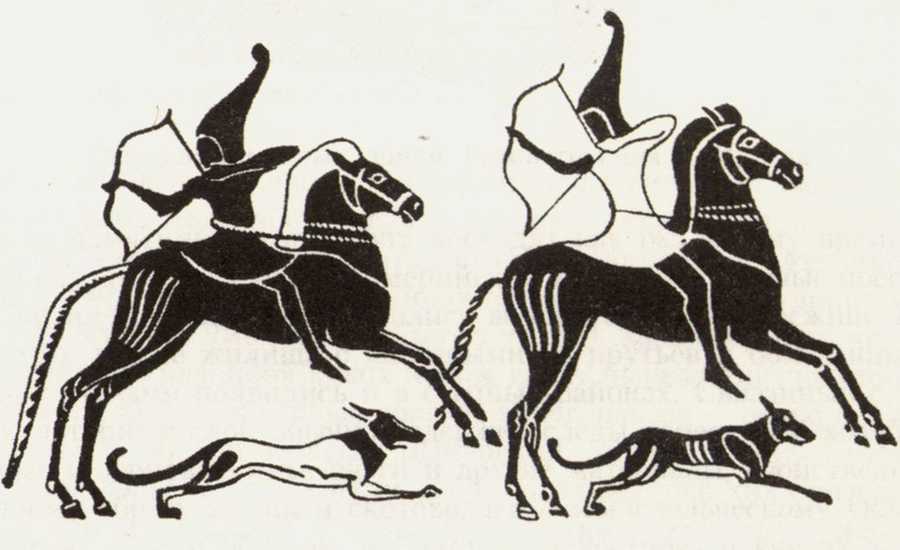
The best-known Neolithic culture in southern Russia evolved in the valleys of the Dniepr, the Bug, and the Dniestr as early as the fourth millennium before Christ. It was represented by tillers and warlike nomads, who in most cases managed to coexist rather peacefully, but sometimes fought each other.
The Cimmerians belonged to the Tharcian subdivision of the Indo-European language family and ruled southern Russia in the period between 1000 B.C. and 700 B.C. They managed to create a unique culture and religion. The ruling class changed several times without damaging the fundamental cultural continuity.
Scythian nomads
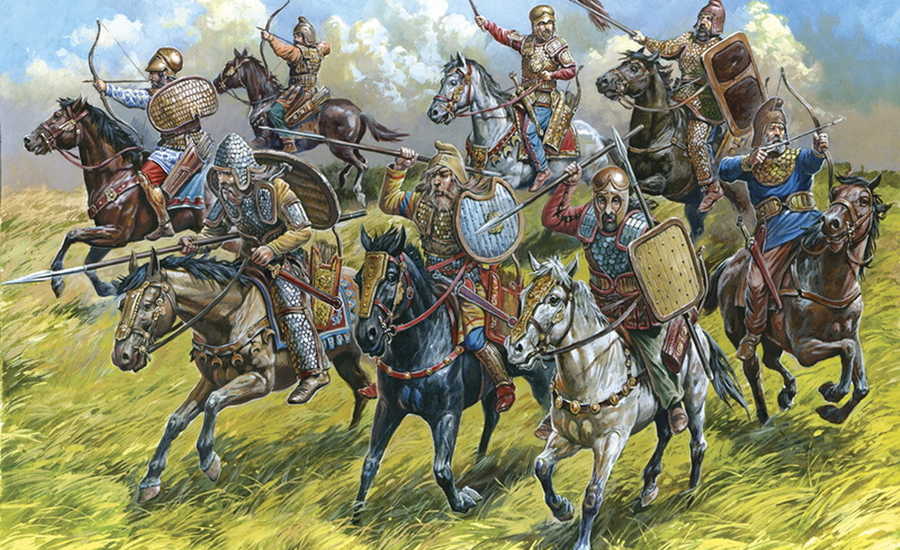
In 700 B.C. the Cimmerians were followed into Southern Russia by the Sсythians, who spoke an Iranian dialect and managed to establish control over the huge area extending from the Danube in the West to middle Asia in the East. Their domination in the territory now occupied by part of our state lasted until the end of the third century B.C. There is tons of information out there about the Scythians; many thanks to "the father of history" Herodotus, who left a description of their culture and way of life. The Scythians were typical nomads: they lived in tent-like carriages dragged by oxen, used horses instead of money and defended themselves with bows, arrows and short swords. Their military tactics were to attack the enemy unexpectedly and then escape quickly after attaining what it was they were after in the first place. These tactics, based on mobility, enabled them to fight successfully against the mighty Persians, who failed to defeat the crafty nomads several times. The Scythians established a strong military state, but one shouldn't forget that among the total Scythian population there were also a group of people, known as "the Scythian Ploughmen". Their main occupation was tilling, but they did a lot to develop the culture and religion of the area.
Sarmatians and Greeks
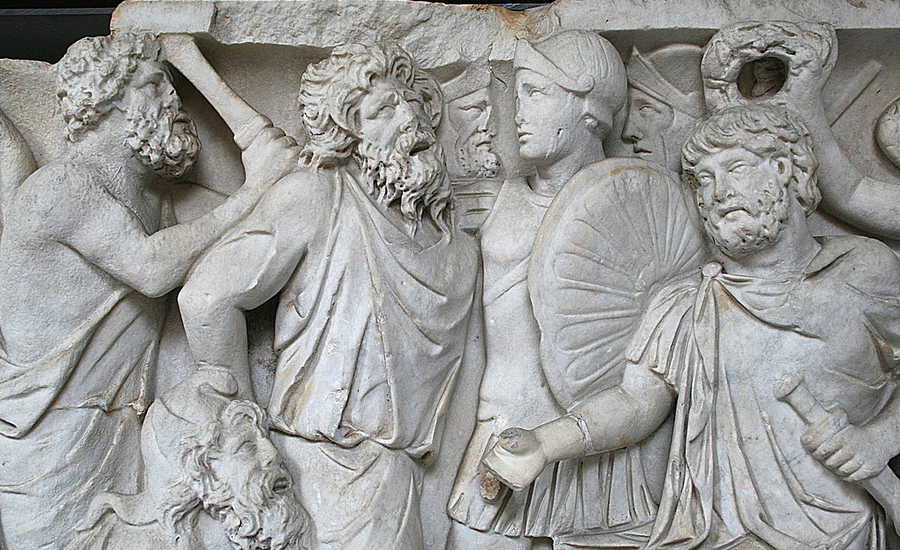
In 3 B.C. the Scythian territories were conquered by another Iranian-speaking population, the Sarmatians. Generally speaking they didn't differ much from the Scythians and therefore quickly fit into the culture and economy of the area. The Sarmatian rule in southern Russia lasted from the end of the 3rd century B.C. to the 3rd century A.D.
It was during the Scytho-Sarmation period that the Greeks started establishing their colonies on the coast of the Black Sea in southern Russia. Especially rich and influential among these colonies were Chersonesus, Sevastopol, Tanais, Panticapaeum and Olbia, which were all visited by the above-mentioned Herodotus. These colonies began as fishing enterprises but later grew into flourishing commercial centers. But what's more important is that they made the highly developed Greek culture available to inhabitants of southern Russia and thus enabled their participation in the very pulse of the Hellenic world. The Iranians did nothing to destroy the Greek colonies, choosing instead to maintain trade and other contacts with them. Intermarriage and assimilation, not wars formed the basis of their relations. The close cooperation of the Greeks on one hand and the Scythians and the Sarmatians on the other had led to the emergence of a unique culture, which combined both European and Asian components. As we can see, the territory of Russia played a role in the construction of a bridge between Eastern and Western civilizations preceding the birth of Christ.
Goths
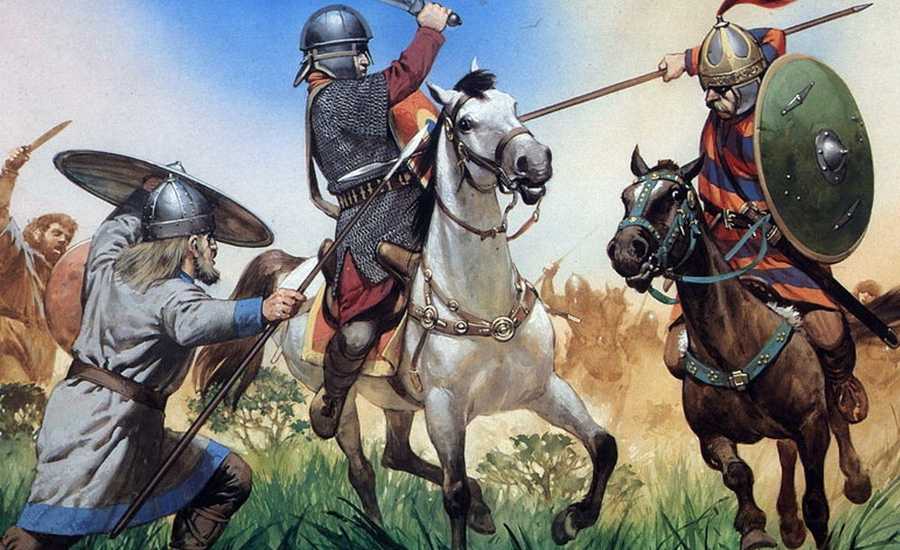
The Sarmatian rule in southern Russia was interrupted by the Germanic tribe of the Goths, who gained control over the area in approximately 200 A.D. Although they proved themselves to be skillful warriors and sailors, they had very little to contribute to the Iranian-Greek culture. In the year 370 they were challenged by Turkic-speaking people from Central Asia known as the Huns. The Huns, led by Attila, were not associated with the great migrations which took place in Europe at this time. Attila had led his warriors up to France, where they were finally defeated. But the Huns put Gothic control over southern Russian to an end and enabled its settlement by the Bulgars (who came from the East) and the Slavs (who came from Europe). The great migration of the people was like a storm in the ocean, like a flood in the spring; it radically changed the political and ethnic face of Europe. The future Russia was no exception.
Khazars
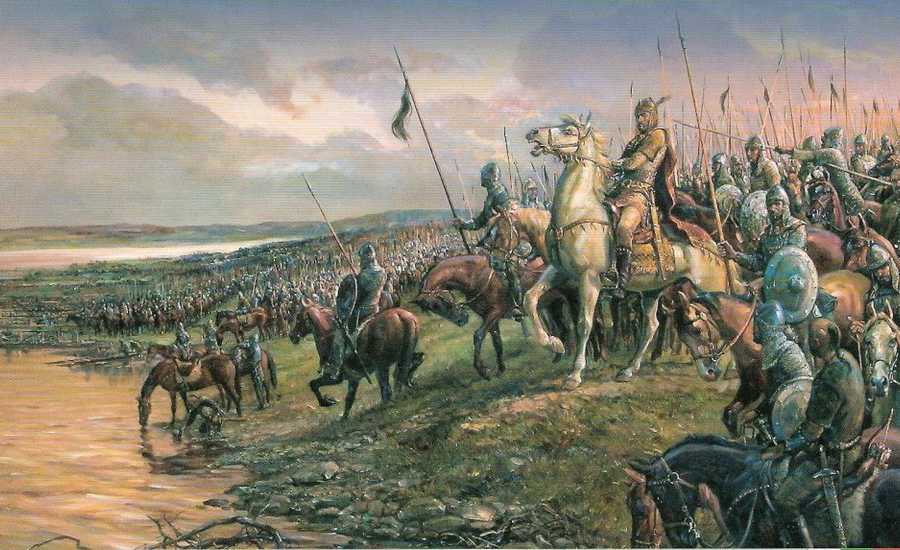
In the 7th century A.D. a new force in southern Russia was gaining strength, to be more exact, on the lower Volga: the Khazar state. The impact of the Khazars split the Bulgars in two groups. The representatives of the first group moved to the Balkans, where they assimilated with the Slaves and gave the territory its present name "Bulgaria". The representatives of the second one established a state at the confluence of the Volga and the Kama, which later became known as Volga's Bulgaria.
Although the Khazars were another Turkic-speaking people, their historical role proved to be quiet different from that of the Huns. They soon gave up their nomadic way of life and established a state, which was comprised of vast areas in southern Russia, and with time became a regional superpower. The Khazars built the towns, passed rather progressive laws and grew rapidly in wealth and influence. This was partly because of the favorable position of the Khazar State, which lay at the crossroads of two continents and therefore had close links to the Arabic and Byzantine worlds (the Byzantine Empire and Arabic khalifat were the strongest and culturally most developed states at this time). Another peculiarity of the Khazar state was that people there were given a right to practice any religion that they wanted. This was the main reason why Christians, Muslims, Jews and Pagans lived remarkably tolerant of one another. But later on the upper-class accepted Judaism only and carried out some political reforms. The kagan, who used to be the country's actual ruler, became a symbolic figure as today the queen of England or the emperor of Japan are. The Kagan held all power in the palm of his hand and came to be treated as God.
When the Russian state appeared it already had a long history of disagreement and war with the Khazars. The Khazars never recovered from prince Svyatoslav's campaign in the middle of the 10th century. The population completely disappeared from the world scene in the 11th century having left behind only memories about its former fame. But despite wars, the Khazar state had played a meaningful role in Russian history, for its general cosmopolitanism, religious tolerance and trade connections greatly influenced many aspects of life in Kievian Russia.
Eastern Slavs
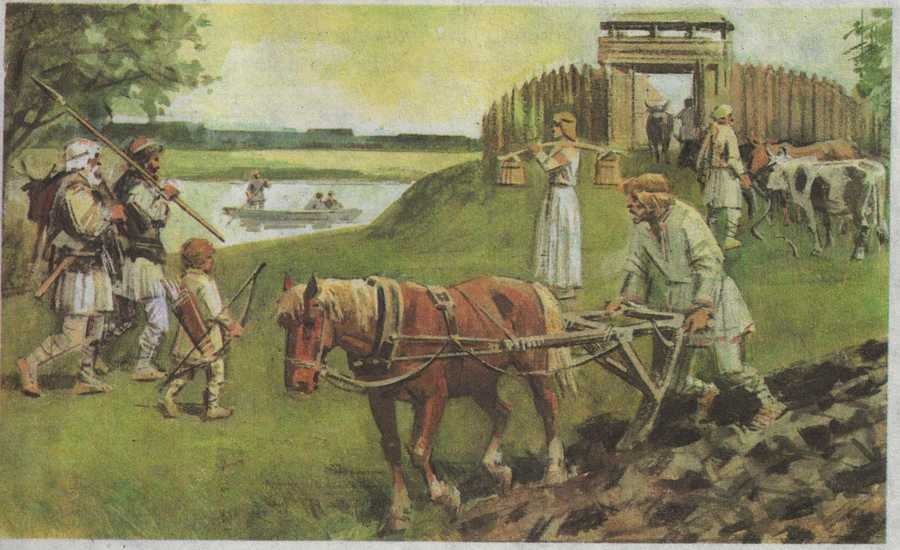
Cultures on the northern shore of the Black Sea and on the southern Russian steppe, from the prehistoric period to the time of the Khazars, form an essential part of the background of Kievian Russia. Yet it is true that the people of the Kievian state, who came to be known as Russians, were not Scythians, Greeks, or Khazars, but East Slavs.
But who were these East Slavs that were the future founders of the Russian state? When and where did they come from? To the present day these questions remain a great mystery. They have always brought forth endless debates among linguists, anthropologists, archeologists, historians and many other scholars. Most of the information about the Slavs is taken from historical and geographical works of Byzantine, Gothic, and Arabic authors, which all tend to be extremely controversial.
Slavic Languages
The Slavic languages form a subdivision of the Indo-European language family, which includes most of the tongues spoken in Europe today (for example, English) and some used in Asia. It started to split into various languages in approximately the 4th millennium B.C. But none of the specialists can say exactly when and where Slavic languages first emerged. Some of them claim that it happened in the 2nd millennium B.C., others are quite sure that it was in the 5th century B.C.
In different Slavic languages there are many similar words for the designation of trees, woods, rivers, lakes and swamps. This leads to the presumption that the mutual ancestors of all the Slavs lived in a marshland with a mild climate, where there were many forests, rivers and lakes. Such a territory has been found in today's Poland, somewhere around the Visalia River.
Early Slavic Cultures
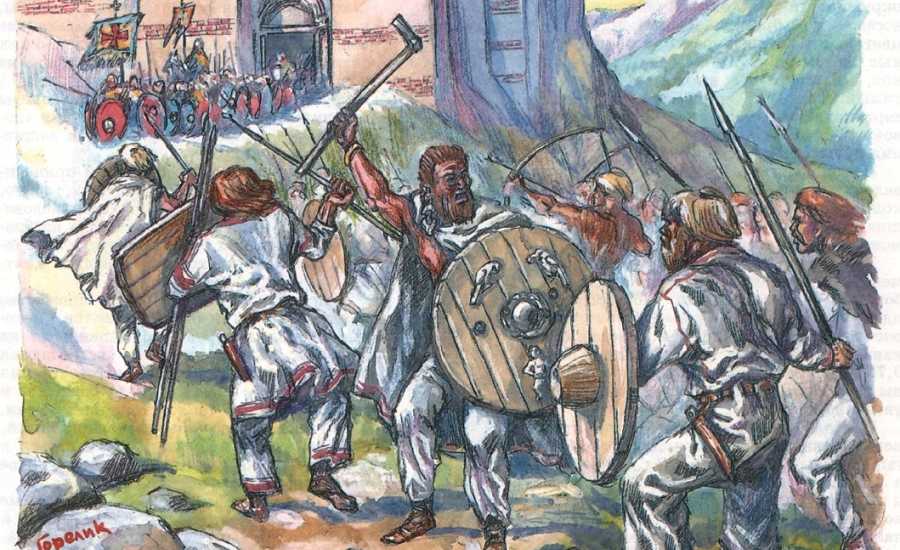
According to the latest scientific researchers, the first undoubtedly Slavic archeological cultures date from the 6th century A.D. It was at this time when ancient writers first mentioned the Slavs in their historical and geographical works. The Byzantine author Procopius described them as "exceptionally brave, strong-willed and resourceful warriors, ready to challenge the best troops of the world". Another Byzantine historian, Mavricius Strateg, left us a remarkable description of the Slavs, which claimed that they were very persistent on the battleground.
The Slavs were greatly feared in the Byzantine Empire as the Normans were in Europe some time later in history. This powerful state has always coped with less developed civilizations which lived near its boundaries. But the mighty nomads from Middle Asia, known as the Huns, appeared in Europe in the 5th century and caused the so-called great migration of people. Every ethnic group living in Europe at this time began to move and the Slavs were no exception. They started raiding the Byzantine Empire, badly damaging its economy and frightening its inhabitants. The brave Slavs were so difficult to defeat that the Empire's government decided to give them civilian rights in the 6th century, and so they started settling within the boundaries of the state. It was also in the 6th century that streams of Slavic tribes flew into the Russian plains. By the 8th century the Slavs already possessed huge territories, extending from the Odder in the south to nearly the Volga in the east, and from the Balkans in the South to the Baltic Sea in the north. By this time that the Slavs were divided into 3 large groups: West Slavs (future Czechs and Poles), South Slaves (future Serbs) and East Slavs (future Ukrainians, White Russians or Byelorussians and Russians).
Where did Eastern Slavs Live?
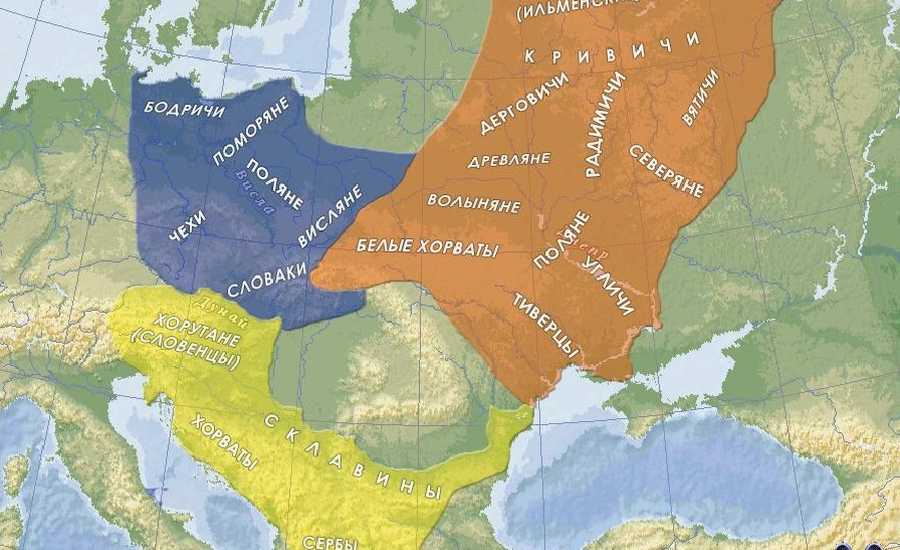
Because the East Slavs are the founders of the Russian State, they deserve the most attention. According to our main written source, the Kievian Primary Chronicle of the 12th century, the East Slavs were finally divided into 12 tribes located on the broad expanses of the Russian plains, from the Black Sea, and the Carpathian Mountains, across the Ukraine, and beyond, northward to the Novgorod territory and eastward toward Volga. Their neighbors included Turkic and Iranian people in southern Russia, and Finnish and Baltic tribes in the North. These people had already lived on the territories where the East Slavs intended to settle. But the aboriginals and new-comers were comparatively seldom at war. Intermarriages and assimilation took place far more often. The Slavs came to this or that area and established a village. Soon they faced, for example, the Finns. But the strength of local populations was so small, that the warlike Slavs saw no reason to fight, and preferred making friends. This peculiarity can be viewed as a significant factor in Russian history. When Russians crossed the Ural Mountains late in the 16th century and found themselves in Siberia, which was inhabited by the primitive tribes of local peoples, they treated them remarkably well. Generally speaking, Russians managed to join the huge territories of Siberia partly because they were almost never at war with the aboriginals, allowing them the right to live as they wanted and to practice any form of religion.
Eastern Slavic Society
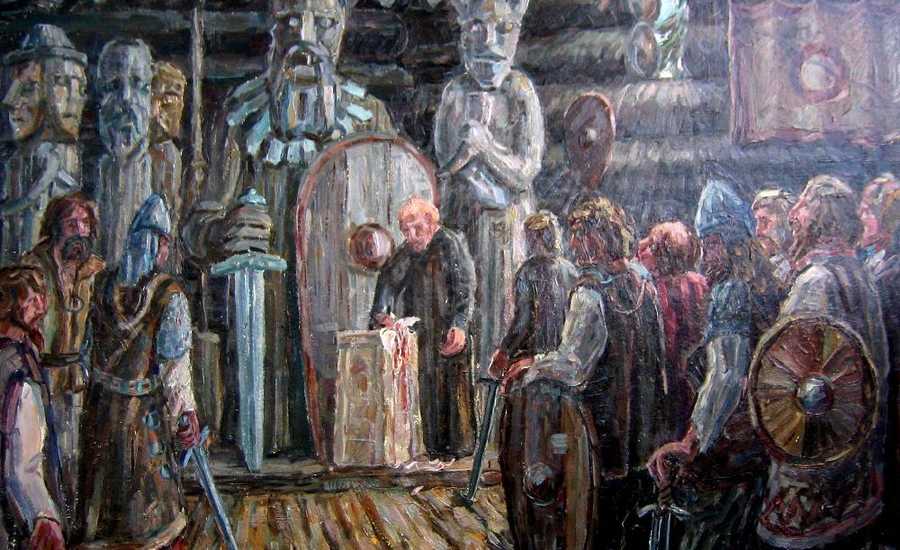
By the 9th century A. D. the Eastern Slavic economy, society, and culture had already experienced considerable development. Agriculture was well and widely established. Other important occupations included fishing, hunting, cattle-raising, weaving, and pottery-making, as well as other crafts and arts, such as carpentry. The East Slavs had been engaging in a varied and far-flung commerce and possessed a remarkable number of towns. Some of them, such as Novgorod, Smolensk, and Kiev, a town belonging to the tribe of the Polaine, developed their individual histories, which are both interesting and important.
Very little is known about the political organization of the East Slavs. At the head of each tribe was a prince, who led campaigns and held diplomatic and sometimes religious functions. By the 9th century the prince's guards started to play a significant role in history. They were called druzhina (the word "druzhina" springs from the Russian word "droog", meaning "friend") and later formed an aristocracy. The guards not only accompanied the prince during campaigns, but also tried to aid their leader the best they could by giving advice regarding exterior and interior policies. A council of elders had the same tasks as that of the druzhina, but their decisions could sometimes abolish those of a prince.
Besides the prince and a council of elders, there was another significant element of the political organization of the East Slavs. This was a gathering of the free male members of a tribe, known as veche. The three elements of political organization, described above are characteristics of a socially evolved civilization, among which the East Slavs are included.
Eastern Slavic Beliefs
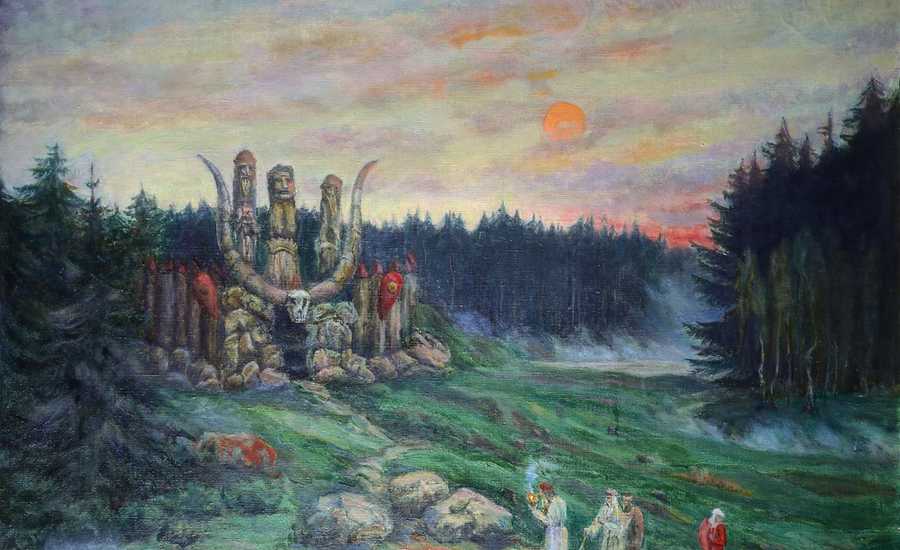
The Slavs had developed an interesting and original religion, which combined some signature traits of European and Iranian paganism. According to Slavic beliefs, our world is divided into heaven, where gods live; earth, which is inhabited by people, animals and plans, and the underworld, where the souls of dead ancestors dwell. Similar conceptions were characteristic of many other mythological systems that existed at this time in Europe and Asia.
The supreme god was that of war, known as Perun. He was responsible for lightning and thunder, which ancient people were extremely afraid of. The Prince and his warriors made rich sacrifices to Perun before each campaign. Some East Slavic tribes worshiped Svarog, who was considered to be the god of heaven's fire and of fire in general. Scholars claim that Perun and Svarog were just two different names of the same god, and in some areas this was really true. The Slavs also worshiped and made sacrifices to the goddess of fertility. She was known in ancient Russia as Mokosh.
The Slavs were significantly influenced by Iranian mythology, which emphasized the cult of the sun. The Slavic god of the sun, Yarilo, was among the most popular and worshipped deities, whose images were to be seen almost in every village. Another borrowing from Iranian mythology was Simargle, who resembled the Persian prophetic bird Simurg.
The most popular holiday of the East Slavs was the day of solstice, which later became known as the day of Ivan Cupala. On this day people would bath in the lakes and rivers, hoping that they would be able to recover from all their diseases, even from incurable ones.
Read on to learn about the Kievan Russia or visit one of our Russian tour pages.
